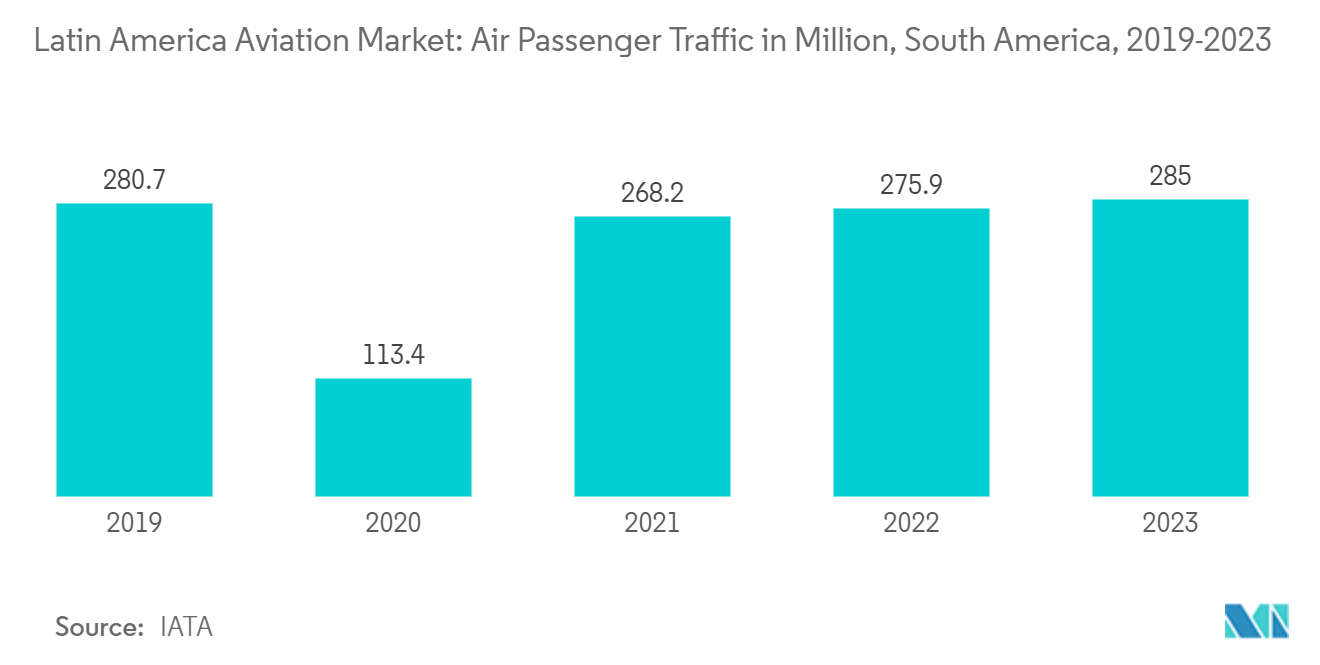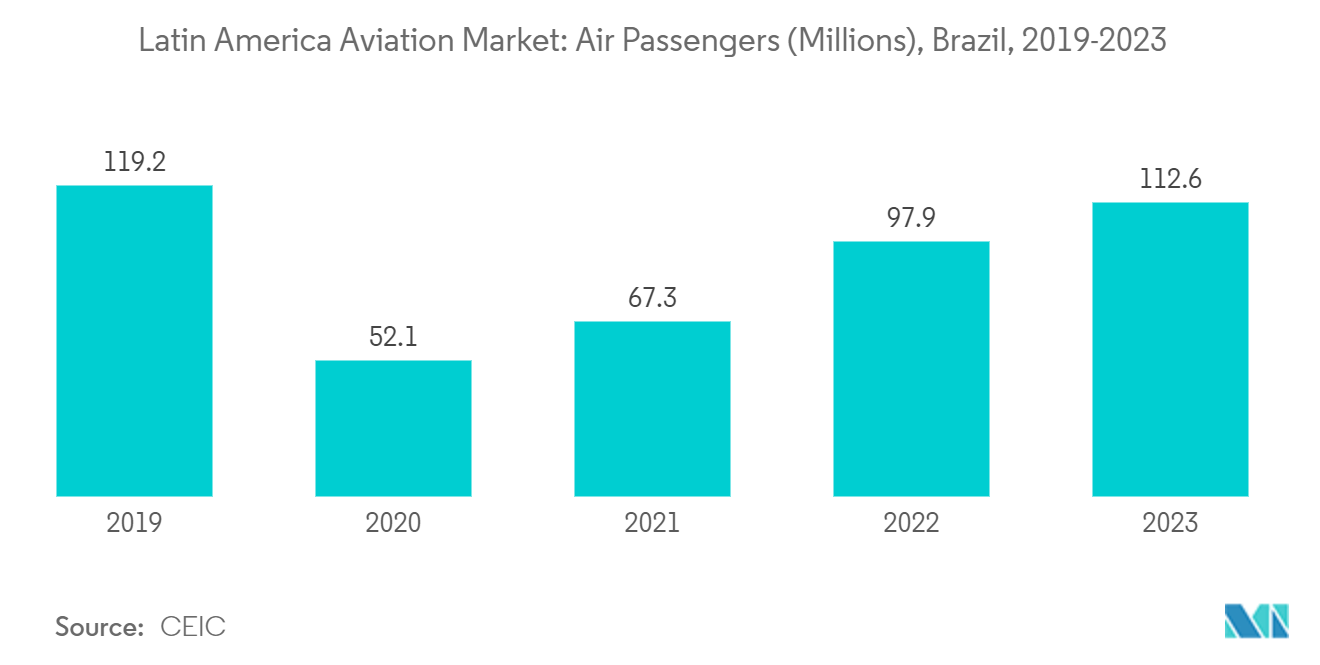Market Trends of Latin America Aviation Industry
The Commercial Aircraft Segment will Dominate the Market During the Forecast Period
Latin America's commercial segment is poised to dominate the market, driven by a surge in aircraft deliveries and passenger traffic. Historically, airlines like Colombia's SCADTA (now Avianca) and Brazil's VARIG expanded their networks with Boeing aircraft, underscoring the region's appetite for new planes. Airbus will deliver 2,550 new aircraft in Latin America from 2022 to 2041, nearly doubling the existing fleet from 1,450 to an estimated 2,850.
While Latin America is expected to rank second to last in projected aircraft deliveries over the next two decades, it surpasses Africa, anticipating 1,230 deliveries and 370 conversions. Notably, 81% of Latin America's existing fleet comprises narrowbody aircraft, a trend set to intensify as Airbus forecasts that 92% of upcoming deliveries will be narrowbody jetliners. This preference for narrowbodies is further fueled by the region's growing low-cost carrier segment, leveraging these planes for enhanced efficiency and traffic stimulation.
Highlighting the region's fleet modernization, Bolivia's national carrier unveiled plans in March 2022 to replace its aging fleet, including B737-300s (26.3 years old) and B767-300ERs (27.2 years old), with newer models like the Airbus A330-200s and B737-800s. Similarly, in the same month, Avianca, a prominent Colombian airline, inked a deal with Airbus for 88 A320 neo aircraft, aligning with its strategic fleet expansion, set for integration between 2025 and 2031.

Brazil will Showcase Significant Growth During the Forecast Period
The burgeoning middle class in Brazil is propelling the demand for air travel. With more individuals entering the middle-income bracket, domestic air traffic is witnessing a notable uptick. Additionally, as discretionary spending rises, Brazilians increasingly explore domestic and international destinations, further fueling the demand. In 2023, the number of passengers traveling on domestic and international flights in Brazil surged to 112.6 million, reflecting a 15.3% rise from the previous year's 97.6 million. Introducing low-cost carriers (LCCs) has been a transformative move in the Brazilian aviation landscape. These carriers have reshaped air travel dynamics by offering competitive pricing, appealing to budget-conscious travelers, and spurring interest in short-haul routes.
By December 2023, GOL Airlines, a prominent LCC in Brazil, had a backlog of 91 B737 MAX aircraft. By the end of 2023, GOL Airlines was expected to have 53 B737 MAX planes, making them 50% of its fleet by 2025. In a strategic move, Azul announced the acquisition of seven Airbus A330neos in February 2024, with deliveries slated to commence in 2026.
Brazil leads South America in the number of active general aviation aircraft, with over a third of the region's total fleet based in the country. In 2023, Brazil's business jets constituted 58% of South America's fleet, with Cessna (a Textron Inc. subsidiary) and Embraer being the primary manufacturers. Furthermore, in September 2022, Brazil's armed forces, under the Combat Aircraft Programme Coordinating Committee (COPAC), procured 27 single-engine H125 helicopters. These helicopters are set to enhance the training capabilities of the Brazilian Navy and Air Force, replacing the aging AS350 and Bell 206 models. Such strategic acquisitions, spanning military and civilian aircraft, are poised to drive market demand in Brazil in the coming years.


